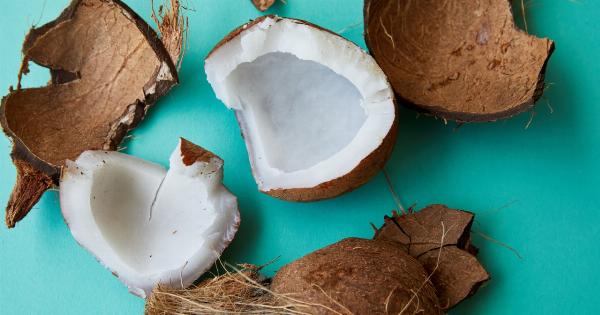Coconut bladder, also known as coconut cystitis or bladder stones, is a medical condition that involves the formation of small, coconut-shaped stones in the bladder.
These stones are made up of mineral deposits and can range in size from a grain of sand to a golf ball. The condition is more common in women than men.
Causes of Coconut Bladder
There are several factors that can contribute to the development of coconut bladder. These include:.
1. Dehydration
Not drinking enough water can cause urine to become concentrated, which can lead to the formation of bladder stones. It is important to drink plenty of water throughout the day to prevent this from happening.
2. Urinary Tract Infections (UTIs)
Frequent UTIs can irritate the bladder lining, causing inflammation and the formation of stones. Women are more prone to developing UTIs due to their shorter urethra, which makes it easier for bacteria to enter the bladder.
3. Kidney Stones
People who have had kidney stones in the past are at an increased risk of developing bladder stones. This is because the minerals that make up kidney stones can also contribute to the formation of bladder stones.
4. Bladder Outlet Obstruction
Anything that obstructs the flow of urine out of the bladder can increase the risk of bladder stones. This can include an enlarged prostate in men, or a bladder prolapse in women.
5. Diet
A diet high in salt, sugar, and animal protein can increase the risk of bladder stones. It is important to eat a well-balanced diet that is low in sodium and sugar to prevent this from happening.
Symptoms of Coconut Bladder
Many people with bladder stones do not experience any symptoms, and the stones are discovered incidentally during routine imaging tests. However, in some cases, bladder stones can cause the following symptoms:.
1. Painful Urination
The presence of stones in the bladder can cause pain or burning sensations during urination.
2. Lower Abdominal Pain
Bladder stones can cause dull or sharp pain in the lower abdomen, depending on their location and size.
3. Blood in the Urine
The irritation caused by bladder stones can cause small amounts of blood to appear in the urine.
4. Difficulty Urinating
In some cases, bladder stones can obstruct the flow of urine out of the bladder, causing difficulty urinating.
Treatment of Coconut Bladder
Treatment for bladder stones depends on their size and location, as well as the severity of symptoms. Small stones that do not cause any symptoms may not require treatment at all.
However, larger stones or stones that are causing symptoms may need to be removed using one of the following methods:.
1. Extracorporeal Shock Wave Lithotripsy (ESWL)
ESWL is a non-invasive procedure that uses shock waves to break up the stones into smaller pieces that can be easily passed out of the bladder in urine.
2. Cystolitholapaxy
Cystolitholapaxy is a minimally invasive procedure that involves using a laser to break up the stones into smaller pieces that can be easily removed from the bladder.
3. Surgery
In rare cases, surgery may be required to remove very large stones or stones that have caused damage to the bladder.
Prevention of Coconut Bladder
The following tips can help prevent the formation of bladder stones:.
1. Drink Plenty of Water
Drinking plenty of water throughout the day can help dilute urine and prevent the formation of mineral deposits in the bladder.
2. Practice Good Hygiene
Wiping front to back after using the bathroom can help prevent the spread of bacteria from the anus to the urethra, reducing the risk of UTIs.
3. Follow a Healthy Diet
Eating a well-balanced diet that is low in sodium and sugar can help prevent the formation of mineral deposits in the bladder.
4. Treat UTIs Promptly
If you experience symptoms of a UTI, such as painful urination or blood in the urine, seek medical treatment promptly to prevent the infection from spreading to the bladder.
Conclusion
Coconut bladder is a relatively common condition that can be caused by a variety of factors, including dehydration, urinary tract infections, kidney stones, bladder outlet obstruction, and diet.
While many people with bladder stones do not experience any symptoms, some may experience painful urination, lower abdominal pain, blood in the urine, or difficulty urinating. Treatment depends on the size and location of the stones, as well as the severity of symptoms, and may include non-invasive shock wave therapy, minimally invasive laser therapy, or surgery in rare cases.
To prevent the formation of bladder stones, it is important to drink plenty of water, practice good hygiene, follow a healthy diet, and seek prompt treatment for UTIs.






























